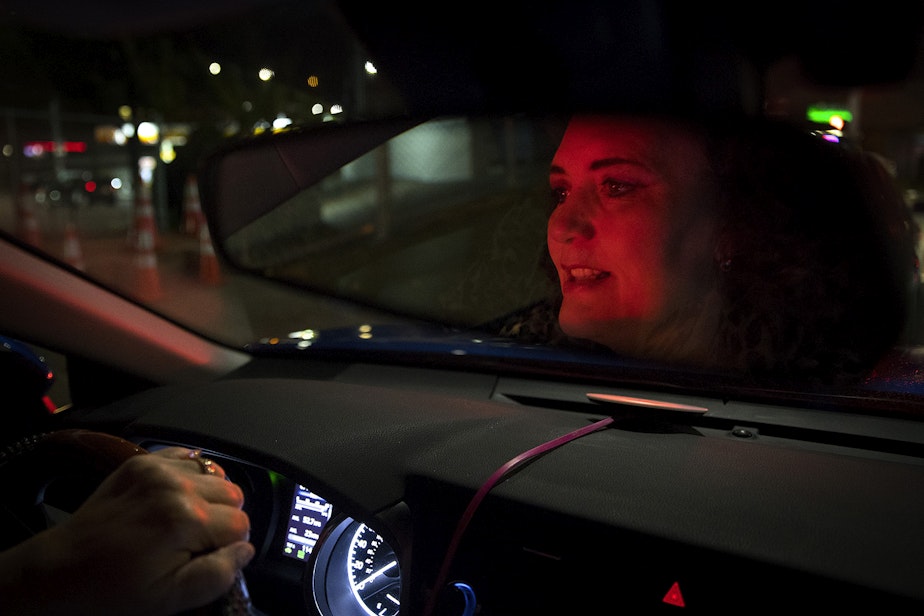Seattle Uber & Lyft drivers report small pay bumps following law change

This month, Uber and Lyft drivers got a small raise. That’s because a new Seattle law kicked in that increased how much money drivers earn per ride.
It's too soon to know the law's full impact. But drivers say some kinds of rides are now paying more.
Uber driver Papa Diawara says he’s seen a small bump in his pay from Uber. For example, when he drives someone to the airport. Before the law went into effect, he earned $20 or $22 taking someone to the airport. Now he says he earns $26 to $28.
At least, that's true for fares originating in Seattle. When he turns around at the airport to take a new rider back to Seattle, the fare originates in SeaTac, and so doesn't benefit from the Seattle law requiring higher pay.
Few drivers expect their line of work to be lucrative during the pandemic. Many drivers have stopped driving altogether, fearing being in a confined space with a stranger in the time of Covid-19.
Drivers who have continued working say the small raises help now and will help even more when the economy comes back. Driver Jamel Jara says he notices the increase most when he's giving very short trips.
"Before, sometimes they pay you $2.97 for very short trips," he said. "But starting in January, in Seattle the minimum payment is $5.00. It's a big change."
Sponsored
Jara said it doesn't seem like much, but those short trips add up quickly. Jara said he will use the money to buy food for his family, and for his education (he's studying computer science).
The higher pay is being phased in and will be at full strength by April.
Uber worries the higher fares will scare off riders.
"There's every reason to believe that per trip earning, the amount you're earning going from downtown Seattle to SeaTac, is going to go up because you're earning more per minute, and you're earning more per mile," said Harry Hartfield, an Uber spokesperson.
"The big question is what's going to happen to weekly and monthly earnings," he said. "If you're making more per trip, but you're doing fewer trips, you're not actually making more on a weekly or monthly basis. So we just need to see what the long-term impact is on trip volume before we can see the full impact of the law."
Sponsored
Dave Oehler, a driver with the industry-backed group Drive Forward, also worries that riders will turn away from ride sharing.
“People are going to be like, 'Well, that’s $20, but that used to be $13. Well, I’m just going to take mass transit now. Shoot, or I’m just gonna take one of those scooter bikes.'”
That could actually help in Seattle, as Uber and Lyft vehicles have been found to contribute to traffic congestion, or at least they did before the pandemic.
Most seem to agree that Seattle won’t be able to measure the effect of these pay increases until after the pandemic, when demand for ridesharing services presumably returns.
Seattle Mayor Jenny Durkan pushed for the changes after finding that driver wages, which are part of the gig economy and not subject to minimum wage laws, were paying drivers less than minimum wage, after accounting for business expenses such as gas and wear and tear on cars.




